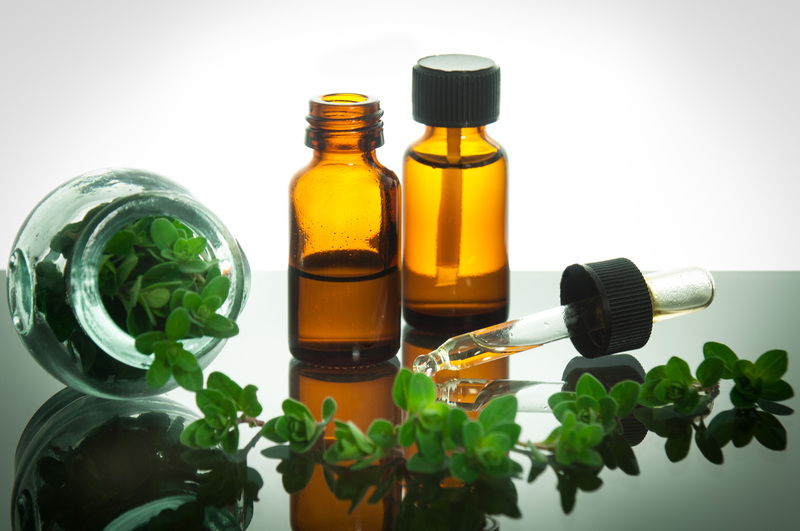Proven Techniques for Keeping Your Bathroom Mold-Free
A bathroom is one of the most used and loved spaces in any home, but it's also the perfect breeding ground for mold. The combination of persistent moisture, warmth, and limited ventilation makes bathrooms vulnerable to this unwelcome intruder. Mold not only endangers your home structure but also your health -- it can trigger allergies, respiratory problems, and worsen asthma.
So, how can you ensure your bathroom remains a sanctuary and not a science experiment? In this article, we will explore comprehensive, effective, and proven techniques for keeping your bathroom mold-free. Whether you own or rent your home, these practical tips will help you prevent mold growth and maintain a clean, healthy environment.

Why Mold Loves Your Bathroom
Before diving into tried-and-tested methods for preventing bathroom mold, it's important to understand why bathrooms are so susceptible. Bathrooms naturally harbor:
- Frequent humidity and condensation, especially on mirrors, showers, and tiles
- Poor ventilation or insufficient air flow
- Warm temperatures which promote mold growth
- Organic residue on grout, tiles, and other surfaces, providing food for mold
- Standing water or leaks that go unnoticed behind toilets, under sinks, or on bathtub edges
Mold spores are everywhere, but it's this combination of moisture and organic matter that makes your bathroom a hotspot. The key to keeping your bathroom mold-free is breaking the cycle of moisture and food supply.
1. Enhance Bathroom Ventilation
One of the most effective ways to prevent mold in the bathroom is ensuring proper ventilation.
Install and Use Exhaust Fans Regularly
- Install a high-quality exhaust fan if you don't already have one.
- Make it a habit to operate your fan during and after every shower or bath for at least 20-30 minutes.
- Clean your exhaust fan's cover and blades every few months to ensure maximum efficiency.
If your bathroom lacks a fan, try to open a window or door to create cross-ventilation during and after showers.
Encourage Air Circulation
- Leave the bathroom door open when not in use.
- Use a small portable fan, especially after baths or steamy showers, to help dry out the area.
- Consider installing a humidity-sensing fan that turns on and off automatically.
2. Control Humidity and Moisture Levels
Mold requires moisture to grow, so managing bathroom humidity is crucial to mold prevention.
Monitor and Reduce Humidity
- Install a digital hygrometer to monitor humidity levels. Keep bathroom humidity below 50-55%.
- Use a portable dehumidifier if your bathroom does not ventilate well.
Dry Wet Surfaces
- Wipe down shower walls, doors, and tiles after each use using a squeegee or towel.
- Make sure to dry any pooling or standing water from the floor, corners, and countertops as soon as possible.
Pro Tip: Keep a designated towel or microfiber cloth handy for quick wipe-downs.
3. Use Mold-Resistant Products and Materials
If you're remodeling or updating your bathroom, consider products specifically designed to resist mold and moisture.
Mold-Resistant Paints and Primers
- Choose mold-inhibiting paints for your bathroom ceilings and walls; these products contain antimicrobial agents that help prevent mold growth.
- Always start with a mold-resistant primer for extra protection.
Mold-Resistant Drywall and Grout
- Opt for green board or cement board instead of standard drywall for areas exposed to water.
- Use epoxy-based grout for tiles, which is less porous and more resistant to moisture and stains than traditional grout.
Sealants and Caulking
- Regularly inspect and maintain caulking around tubs, sinks, and showers.
- Replace any old, cracked, or peeling caulking promptly, and always use a mold-resistant sealant.
4. Clean Regularly and Diligently
Routine cleaning not only removes dirt but also eliminates mold spores before they can take hold.
Target Mold Hotspots
- Focus on – showers, tubs, sinks, grout lines, window sills, and behind the toilet.
- Use a bathroom cleaner with mold-fighting agents or natural alternatives like vinegar and baking soda.
DIY Natural Cleaning Solutions
- Mix one part white vinegar with one part water and spray on surfaces. Let it sit for at least 15 minutes before wiping.
- Sprinkle baking soda on grout, scrub gently, and rinse thoroughly.
- For especially tough spots, use a mix of hydrogen peroxide and water (1:2 ratio) as a non-toxic mold remover.
Note: Always test any solution on a small area first to avoid damaging delicate surfaces.
Don't Forget Shower Curtains and Mats
- Wash your shower curtain or liner in the washing machine with hot water and a bit of vinegar every few weeks.
- Hang towels and mats so they can dry quickly or switch them out regularly.
5. Fix Leaks and Prevent Water Damage
Even the smallest leak can create a persistent source of moisture, fueling bathroom mold growth behind walls, under floors, or around plumbing.
Inspect Plumbing Fixtures
- Check for leaks under sinks, around toilets, and near bathtubs and showers.
- Repair any dripping faucets, loose pipe joints, or leaking drains immediately.
Address Seepage and Infiltration
- Seal any cracks in tile grout and address deteriorating caulk as soon as you notice moisture or discoloration.
- Inspect ceilings and walls below bathrooms for signs of water stains or bubbles – these may indicate hidden leaks.
By immediately correcting leaks and maintaining your bathroom fixtures, you can cut off a major source of moisture before it invites a mold invasion.
6. Declutter and Organize to Prevent Mold
Excess clutter not only traps moisture but also provides more areas for mold to hide and grow. Reduce the risk by keeping your bathroom tidy:
- Avoid storing items directly in the shower, such as loofahs and washcloths, which stay perpetually damp.
- Store toiletries in open baskets or caddies to facilitate airflow.
- Routinely declutter shelves and corners, and discard any products that are expired or rarely used.
The less clutter there is, the easier it will be to clean and spot any early signs of mold.
7. Install and Maintain Good Lighting
Did you know mold thrives in dark, damp environments? Bright lighting in bathrooms helps moisture evaporate and exposes hidden mold colonies.
- Switch to energy-efficient LED lights to create a well-lit space, especially near the shower and tub areas.
- Open blinds or shades to let in natural sunlight when possible, as UV rays naturally inhibit mold growth.
A bright bathroom is not just aesthetically pleasing – it's a subtle yet effective way to make your bathroom mold-free.
8. Stay Proactive with Routine Mold Inspections
Even with the most diligent bathroom cleaning routine, mold can sneak in through small leaks or unnoticed damp spots.
Conduct Regular Visual Inspections
- Examine grout lines, caulking, ceiling edges, and the floors around the toilet and shower for any discoloration or dark spots.
- Check frequently behind and under bathroom cabinets and sinks.
- If you smell a musty odor, that can be a sign of hidden mold growth even if mold isn't visible.
Act Quickly to Remove Small Mold Patches
- Clean minor mold growth with your preferred cleaning solution and a stiff brush or scrubbing pad.
- Don't ignore small patches--mold spreads quickly in moist environments.
If you spot a large or recurring mold infestation, it may be time to call in a professional mold remediation service.

9. Bonus Tips for Keeping Your Bathroom Mold-Free Year-Round
- Upgrade your shower door to a frameless, glass style that dries quickly and provides fewer nooks for mold.
- Replace porous bath mats with rubber-backed varieties that dry fast and are easy to clean.
- Consider adding a moisture-absorbing product like silica gel packs or activated charcoal in cabinets or under the sink.
- Paint ceiling and upper walls with a light color to spot mold growth early.
- Invest in waterproof storage solutions to avoid the buildup of mold-prone residue.
Conclusion: Enjoy a Mold-Free Bathroom for Good!
In summary, keeping your bathroom mold-free requires a mix of vigilance, regular cleaning, and targeted upgrades to your space. By improving air circulation, managing moisture, fixing leaks, selecting mold-resistant materials, and maintaining a clutter-free environment, you'll set up a powerful mold defense system.
Remember: Consistency is key. Even the most advanced products won't work if cleaning routines and repairs are neglected. Incorporate these proven mold prevention techniques into your weekly and monthly habits for lasting results.
Protect your health, preserve your home, and enjoy a fresh, inviting bathroom--free from the headache of mold!
- Start today: Pick one or two techniques from this comprehensive guide and implement them in your bathroom. Over time, you'll build a resilient, mold-fighting routine!

